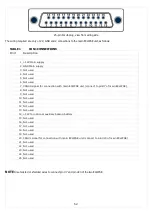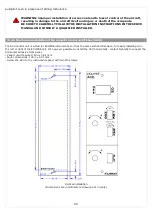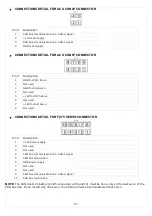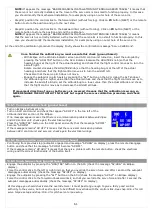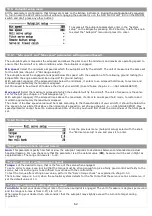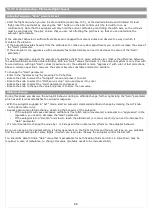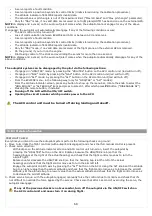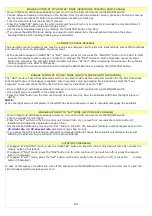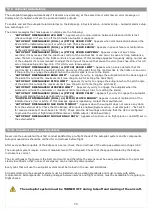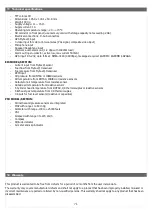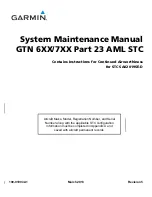
10.7.2 Autopilot setup – Pitch axis (flight based)
Autopilot engage - “Gain” parameter set
- Start the flight and when you are in safe condition (read chap.10.7), at the desired altitude and trimmed for level
flight, insert the autopilot by pressing the “ALT” button on the ACU control unit (the led will turn on as
confirmation). Note that the autopilot will only hold the current altitude by controlling the pitch axis, so the roll axis
must be controlled by the pilot; ensure that you are not affecting the pitch axis, so that you can determine the
autopilot performance.
If the autopilot behavior is sufficiently stable keep it engaged for some minutes and observe the way in which it
mantains the altitude:
- If the autopilot deviates heavily from the altitude set or make very slow adjustments you need to increase the value of
the “Gain” parameter.
- If the autopilot is too aggressive with excessively fast adjustments you need to decrease the value of the “Gain”
parameter.
The “Gain” parameter selects the amount of autopilot activity for a given altitude error (that is the difference between
the desired altitude and the actual altitude). With low “Gain” values (minimum=1) the autopilot system is very slow with
few corrections, with high “Gain” values (maximum=40) the autopilot is more “aggressive” with a lot of fast corrections.
Above a certain upper limit, however, the system becomes unstable and start to oscillate.
To change the “Gain” parameter:
- Enter in the “System setup” by pressing P1+P4 buttons
- Rotate the knob to select the “Autopilot” menu and press it to enter
- Rotate the knob to select the “Pitch servo setup” menu and press it to enter
- Rotate the knob to select the “Gain” parameter and press it.
- Rotate the knob to change the value and press it to store the new value.
Altitude change
During this phase you observe the autopilot behavior during an altitude change, further optimizing the “Gain” parameter
which as said is what establishes the autopilot response.
- With the autopilot engaged in “ALT” mode, start an autopilot commanded altitude change by rotating the ALT knob
on the ACU control unit.
- Repeat again some altitude change, observing the behavior of the autopilot:
•
If the autopilot will cause excessive oscillations (fast pitch angle movements) and seems too “aggressive” in the
regulation, you need to decrease the “Gain” parameter.
•
If the autopilot is too “smooth” and slow to reach the altitude set (or cannot reach it) you need to increase the
“Gain” parameter.
- It's recommended to change the value by 1 or 2 steps and then observe the effects on the autopilot behavior.
As you can imagine the optimal setting is highly dependent on the flight controls and the aircraft type, so you probably
find the optimal setting after some flights, in which you learn also the way the autopilot control the aircraft.
You should be able to find a “Gain” value that is acceptable for both heading holds and turns in smooth air; may be
required, in case of turbulence, to change this value (probably needs to be increased a bit).
66
Summary of Contents for Eclipse
Page 6: ...ECLIPSE PART I INSTALLATION 6 ...
Page 7: ...2 Dimensions 7 ...

